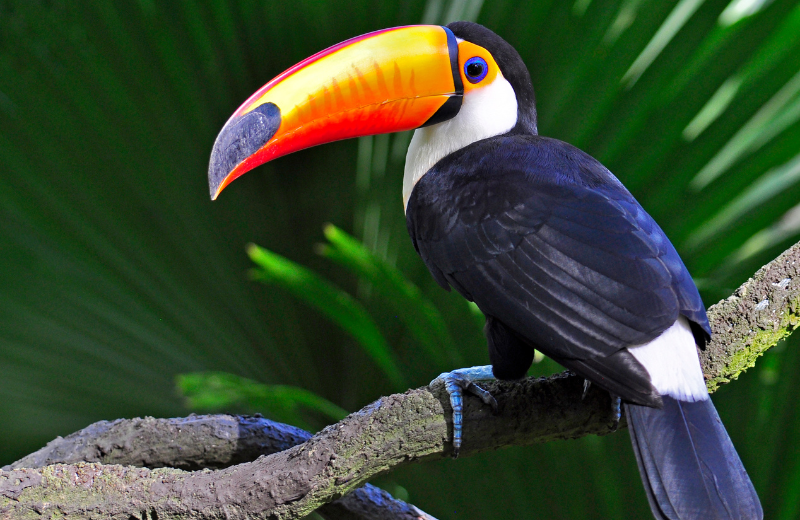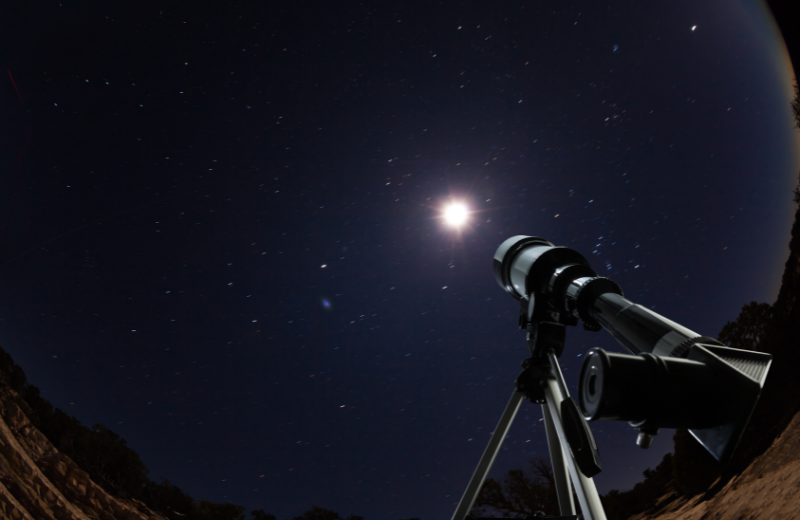Tucana, named after the colourful toucan bird, is a fascinating constellation to behold. Whether you're just beginning your stargazing journey or already have some experience, exploring the stars and features of the Tucana constellation can deepen your understanding and appreciation of the night sky. In this guide, we’ll explore what makes Tucana special, its stars, and the myths surrounding it.
Jump to:
- What is the Tucana Constellation?
- What Does the Constellation Tucana Represent?
- What Does Tucana Look Like?
- How Far is the Tucana Constellation from Earth?
- The Tucana Constellation Myth
- Tucana's Stars
- Nebulae in the Tucana Constellation
- Finding Tucana in the Sky
- Fun Facts About Tucana
- Study Astronomy for £29
Recommended for you!
Best SellersWhat is the Tucana Constellation?
The Tucana constellation is one of the lesser-known but intriguing constellations in the Southern Hemisphere. Named after the toucan, a colourful bird native to tropical regions, this constellation was first introduced in the late 16th century. Tucana belongs to the group of constellations known as "southern birds," along with Phoenix, Grus, and Pavo. Though smaller in size, it’s home to some fascinating celestial objects.
The constellation’s name reflects its connection to exploration and discovery, as European navigators mapped out the southern hemisphere's skies during their expeditions. Tucana represents a relatively small part of the sky, but it plays an important role in the study of astronomy.
What Does the Constellation Tucana Represent?
Tucana’s symbolism may be tied to the toucan, known for its bright, exotic appearance, but the constellation itself holds significance beyond its name. It represents the spirit of exploration, as it was discovered during a time when navigators were charting new paths across the seas and skies.
What Does Tucana Look Like?

The Tucana constellation is somewhat faint, making it harder to spot with the naked eye unless you’re in a location with little light pollution. However, with the help of a telescope or binoculars, Tucana’s distinct shape becomes more noticeable. It’s located near the south celestial pole and is best viewed from the southern hemisphere.
Tucana spans an area of 295 square degrees and is the 48th largest constellation in the sky. While it doesn’t contain any particularly bright stars, it makes up for this with its other fascinating features, including star clusters and galaxies.
How Far is the Tucana Constellation from Earth?
Although the constellation itself is a collection of distant stars, the Tucana constellation's most notable features, such as the Small Magellanic Cloud (SMC), lie approximately 200,000 light-years away from Earth. The SMC is a satellite galaxy of the Milky Way and one of the most famous features of Tucana. Being able to view a galaxy from such a vast distance is an awe-inspiring experience, making Tucana a must-see for astronomers.
The Tucana Constellation Myth

Unlike many constellations in the night sky, Tucana doesn’t have a rich background in ancient mythology. This is because it was named by European astronomers during the Age of Exploration in the 16th century. Johann Bayer, a German astronomer, first recorded Tucana in his star atlas Uranometria in 1603. Unlike Greek or Roman constellations with mythical stories, Tucana was named after the toucan bird, connecting it to the spirit of exploration rather than ancient deities.
Tucana's Stars
While Tucana is not home to the brightest stars, it contains some notable ones that are worth observing. Here are a few key stars in the Tucana constellation:
- Alpha Tucanae: This is the brightest star in Tucana, but it’s only a mid-level brightness compared to stars in other constellations. Located around 200 light-years away, it’s a binary star system with two stars orbiting each other.
- Zeta Tucanae: Another important star, Zeta Tucanae, is a yellow dwarf similar to our Sun. It lies about 28 light-years from Earth, making it one of the closer stars in this constellation.
- Gamma Tucanae: This star is approximately 75 light-years from Earth and has a brightness that makes it one of the easier stars to spot in this constellation.
Nebulae in the Tucana Constellation
One of the most remarkable features of Tucana is the presence of the Small Magellanic Cloud (SMC). This is a dwarf galaxy that orbits the Milky Way and is easily visible with the naked eye under the right conditions. The SMC is not only stunning but also significant to astronomers because it’s a site of star formation and an excellent opportunity to study galaxies beyond our own.
In addition to the SMC, Tucana contains globular clusters, which are groups of stars bound together by gravity. One of the most prominent clusters is 47 Tucanae. It’s the second-brightest globular cluster in the sky and can be seen near the SMC. This star cluster is one of the oldest in the universe, containing hundreds of thousands of stars.
Finding Tucana in the Sky

To see the Tucana constellation at its best, plan your stargazing during the southern spring months, particularly from October to December. During this period, Tucana reaches its highest point in the night sky, making it more visible and easier to locate.
Locating Tucana
Start by identifying nearby constellations such as Hydrus, Phoenix, and Grus, which are prominent in the same region of the southern sky. Once you’ve found these, you can use them as reference points to navigate to Tucana. Phoenix, with its brighter stars, is particularly helpful when trying to pinpoint the location of this more subtle constellation.
For a more precise location, using a star map or a stargazing app can be incredibly useful. These tools align with the current night sky, helping you spot Tucana’s stars, which may be faint to the naked eye, especially in areas with light pollution.
Viewing Tucana with Binoculars or a Telescope
- With Binoculars: Tucana’s stars may be dim, but binoculars can help you trace its shape and spot some of its notable features, such as the nearby Small Magellanic Cloud.
- With a Telescope: A telescope will give you a clearer, more detailed view of Tucana’s stars and deep-sky objects. You can observe the Small Magellanic Cloud and even the 47 Tucanae star cluster, enhancing your appreciation of this constellation.
Best Viewing Conditions
To fully appreciate Tucana, find a location with minimal light pollution and a clear, dark sky, preferably on a moonless night. These conditions will give you the best chance to observe Tucana’s delicate star pattern and its stunning deep-sky features.
Recommended for you!
Best SellersFun Facts About Tucana
- Named After a Bird: Unlike many constellations named after mythological figures, Tucana is named after the toucan, a tropical bird known for its colourful bill.
- Home to a Satellite Galaxy: The Small Magellanic Cloud is one of Tucana’s most significant features. This dwarf galaxy is a neighbour to our Milky Way and is visible to the naked eye under dark skies.
- 47 Tucanae: This famous globular cluster within the constellation is home to some of the oldest stars in the universe.
- Discovered During Exploration: Tucana was charted during the Age of Exploration in the 16th century, reflecting the period’s spirit of discovery.
Study Astronomy for £29
If the Tucana constellation has sparked your curiosity, why not explore more about the stars and the cosmos with our Astronomy Diploma Course at Centre of Excellence? This course offers you a detailed understanding of the universe, from constellations and star types to the fundamentals of space observation. Perfect for all budding astronomers, the course is available for a discounted price of £29.












